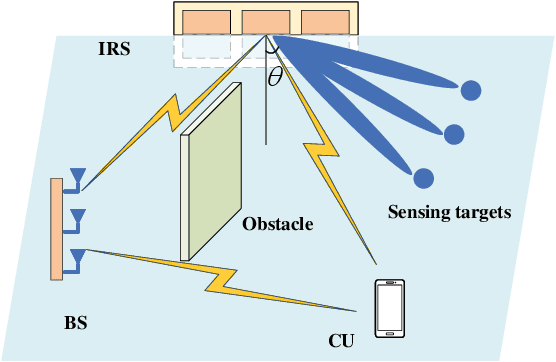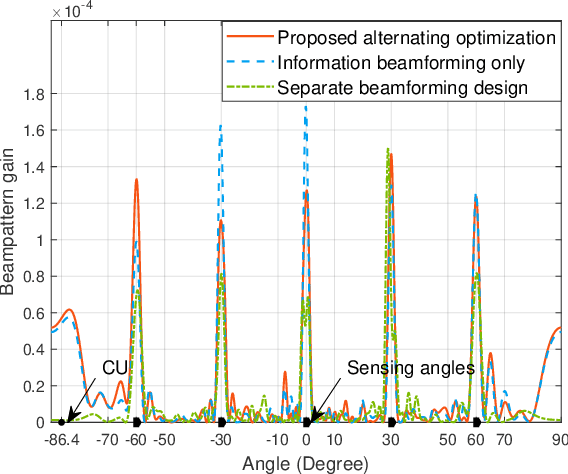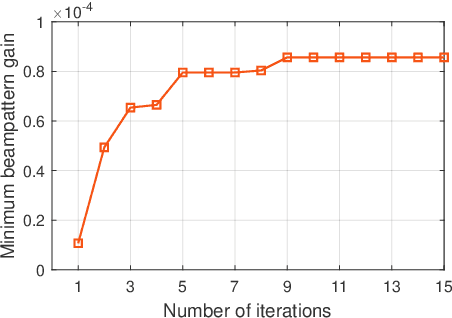Joint transmit and reflective beamforming for IRS-assisted integrated sensing and communication
Paper and Code
Nov 26, 2021


This letter studies an intelligent reflecting surface (IRS)-assisted integrated sensing and communication (ISAC) system, in which one IRS is deployed to not only assist the wireless communication from a multi-antenna base station (BS) to a single-antenna communication user (CU), but also create virtual line-of-sight (LoS) links for sensing targets at areas with LoS links blocked. We consider that the BS transmits combined information and sensing signals for ISAC. Under this setup, we jointly optimize the transmit information and sensing beamforming at the BS and the reflective beamforming at the IRS, to maximize the IRS's minimum beampattern gain towards the desired sensing angles, subject to the minimum signal-to-noise ratio (SNR) requirement at the CU and the maximum transmit power constraint at the BS. Although the formulated SNR-constrained beampattern gain maximization problem is non-convex and difficult to solve, we present an efficient algorithm to obtain a high-quality solution using alternating optimization and semi-definite relaxation (SDR). Numerical results show that the proposed algorithm achieves improved sensing performance while ensuring the communication requirement.
 Add to Chrome
Add to Chrome Add to Firefox
Add to Firefox Add to Edge
Add to Edge